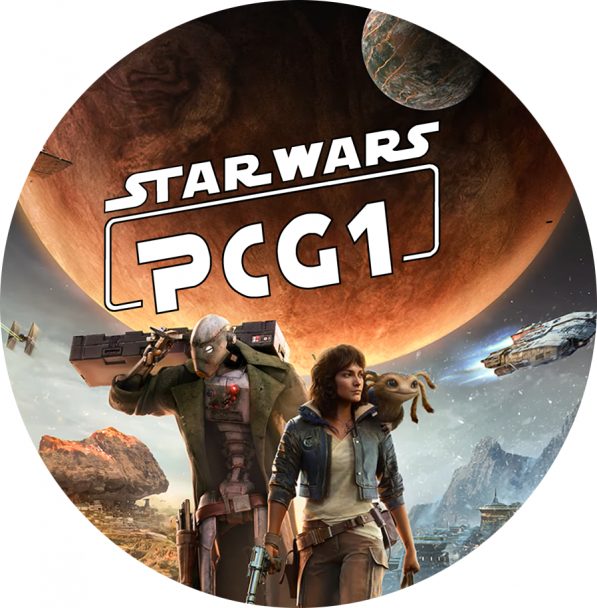

Seconds after I posted a picture of Samsung’s 85-inch 8K TV on Twitter from IFA in Berlin, the haters came raining down on me with comments about how silly 8K was and conspiracy theories about planned obsolescence. Later, I made my case for the new technology in an op-ed entitled “8K is the next big thing in TV. Get over it,” and you as you can imagine, the response was similar.
The very notion of 8K is confusing at best and infuriating at worst. I understand why. Even enthusiasts have a hard time unpacking all this news, and those who don’t live and breathe TV tech are understandably lost.
I’ve been struggling to offer a cogent argument in favor of 8K TV, but that all changed after a recent visit with Samsung. After speaking with several engineers and product managers about 8K TV tech at its New Jersey headquarters, I was turned loose on a prototype of the aforementioned Q900 8K prototype. The experience was both literally and figuratively eye-opening.
I’ve seen the future of 8K TV, and it’s glorious. This progress to a new generation of televisions and the content that feeds them isn’t just inevitable, it’s valuable and exciting. Here’s why.
What is 8K?
It’s easiest to understand 8K once we understand how we got from HDTV to 4K TV.
An HDTV has a resolution of 1,920 x 1,080 – or about 2 million pixels. A 4K TV has a resolution of 3,840 x 2,160, or about 8.3 million pixels. That’s four times as many pixels as an HDTV (doubled in both the vertical and horizontal rows and columns), all crammed in the same amount of space, no matter the screen size – that’s a much higher pixel density, and it is meant to offer a sharper picture.


An 8K TV has a resolution of 7,680 x 4,320 for a mind-bending total of about 33.2 million pixels. That’s four times as many pixels as 4K, and 16 times as many as HDTV. But why do these numbers matter?
You can see the 8K difference … says research
Critics have debated whether the human eye can see the difference between HD and 4K at screen sizes under 65 inches, and the stakes are even higher for 8K. Can 8K really offer a visible difference at anything less than an 85-inch screen? The Society of Motion Picture and Television Engineers (SMPTE) and Japanese broadcaster NHK say we can.
According to a report by SMPTE, 8K resolution is where TV meets the limitations of the human eye, not 4K as many suggest.
NHK backs this claim up pointing to a study it conducted in which viewers looked at the same images on a both a 4K and 8K TV of the same size, and at varying sizes. The images were of everyday still objects, like a vase with flowers, and the participants were asked to identify which image looked more like what they see in real life. The evidence was overwhelmingly in 8K’s favor. The participants picked the 8K version every time.
The studies align with what Yoshiaki Shishikui, a media science professor at the school of interdisciplinary mathematical sciences at Meiji University, has been saying for over four years. Shishikui says that, because of the human eye’s field of view, it is possible for us to detect a TV’s scan lines at certain distances from large-screen TVs, even if we can’t pick out individual pixels. The brain detects these scan lines, and we register the image as looking less like real life, and more like TV. 8K is capable of solving this by making the pixels so tiny and so dense that our brains don’t detect scan lines and the image looks real.


The data suggests that 8K’s value in delivering realism over a 4K equivalent actually starts at around a 49-inch screen and tops out at an 85-inch model. So science suggests that native 8K content delivered to an 8K TV can look more realistic than anything we’ve seen before. And as I’ve experienced, it most certainly does.
But a glaring problem remains: We’re years away from being able to experience anything like that due to an absence of 8K content. 4K content has only recently arrived in earnest, so why is Samsung making an 8K TV now when the rest of the industry is so far behind?
Just wait
Folks were asking that exact question this time six years ago. When 4K TVs first arrived, there was no content to support it, no means to deliver the content, and no bandwidth to support delivery. Still, every major TV manufacturer came out with a 4K TV in 2012.
Today, 4K content is pretty easy to come by. There are now more than 500 titles available on Ultra HD Blu-ray, and on the streaming front, Netflix, Amazon, and iTunes have long lists of 4K titles, from original TV series to blockbuster movies – that is, if you’ve got the bandwidth to handle 4K data loads. DirecTV and Dish Network also offer a handful of 4K channels, and cable operators are … well, they’re still working on it.
It was the same story when 1080p HD TVs came out. Terrestrial broadcasters got their first, followed by HD-DVD and Blu-ray, and eventually cable and satellite operators got there (just barely).
History has shown that next-gen TVs always arrive before next-gen content, and with Samsung’s 8K TV, we’re simply witnessing history repeating itself. NHK has already broadcast in 8K, YouTube has supported it for years, and eventually, paid streaming services will be on board, too. Yes, we’ll need huge bandwidth to support it, but that infrastructure is being laid out right now, and compression codecs will come along just in time to make it all possible without grinding the internet to a screeching halt.
Storage is also a concern, but tech history also shows that storage becomes exponentially bigger and cheaper over time. By the time we need it, we’ll have all the terabytes we need to store these massive 8K video files with 22.2 high-resolution surround sound.
The heavyweights are duking it out
To be clear, I’m not suggesting that progress led by putting the cart before the horse is how this should go, I’m simply pointing out that it always has been and will continue to be the paradigm, especially since the TV landscape is so intensely competitive. In an ideal progression of this technology, content creators and content distributors would coordinate their efforts and prioritize preparing to get 8K content in our homes. With the broadcast arm moving that direction to deliver sports in a way we’ve never seen before, we’ll have a little something to sink our teeth into soon. But given the ravenous appetite for 4K Netflix and Ultra HD Blu-ray, it’s clear folks will be hungry for 8K content as soon as 8K TVs dip down below the $5,000 price point.


It’s also true that the fierce competition to out-innovate each other is at the heart of a battle between Samsung and LG, and, increasingly, among the likes of Sony, Panasonic, TCL, and Hisense.
Samsung simply wanted to be first, and can you blame them? If it hadn’t put the pedal to the metal, it’s likely LG would have swooped in with its 88-inch 8K OLED TV and made itself the object of articles exactly like this one. By beating LG to the punch, Samsung’s got certain bragging rights, and it will be sure to exercise them.
What will 8K feel like?
When 8K content comes down the pipeline, movies and TV shows will certainly benefit, but since 8K’s most obvious benefit is enhanced realism, sports stand to benefit most. It’s no coincidence that NHK’s early broadcasts in both 4K and 8K have centered around sports. Whereas movies and TV are often altered to serve an artistic intent, live sports broadcasts abound with the same colors, people, and motion we see in everyday life, and 8K TV promises to make the experience of viewing sports at home and in sports bars more like being in the stadium than ever before. We’ll be able to see this first-hand when the 2020 Olympics in Tokyo are broadcast in 8K. If that event doesn’t sell doubters on 8K, it’s likely nothing will, but we’ll be shocked if we don’t see glowing accounts of the experience online after NHK lets viewers in on the new tech in Japan.
Outside of sports, viewers can expect a generally clean and ultra-sharp picture from native 8K content. Lines will be smooth where we now see jagged edges, small print will be razor sharp and legible, and we’ll see less color banding when heavy compression hasn’t been applied.
Curiously, the screens people enjoy TV on are getting both bigger … and smaller. While viewing on a tiny phone or tablet is becoming increasingly commonplace, the average screen size sold in North America is going up at a quick clip. The larger the screen, the more benefit there is to be enjoyed from 8K resolution. This trend is strong enough that IHS Markit predicts sales of 8K TVs could top 1 million in 2019 — that’s a festive coming out party for such a brand new technology.
Relax, there’s plenty of time
Eventually, folks will get comfortable with the idea of 8K TV being the new standard. It’s normal for us to see resistance to new technologies, especially since we’re still reeling from accepting one so closely related as 4K. And once the turmoil has subsided, I think folks are going to be gleefully entertained by what 8K TV has to offer. Have patience, it’s going to be great.
So where will TV go next? I dare say that 8K is the end of the line for resolution — and even NHK thinks so. So perhaps better HDR is next? Is a brightness war about to ensue? How about holographic TV where there is no screen at all?
No matter what comes next, let’s keep an open mind and try to be excited for the future instead of frustrated by it. We’ve been here before. We freaked out about 1080p HD, then we freaked out about 4K, but in the end, we were treated to something amazing. While the entertainment industry plods along predictably, let’s not repeat history ourselves by getting unnecessarily worked up over something that will be truly awesome.
The views expressed here are solely those of the author and do not reflect the beliefs of Digital Trends.

